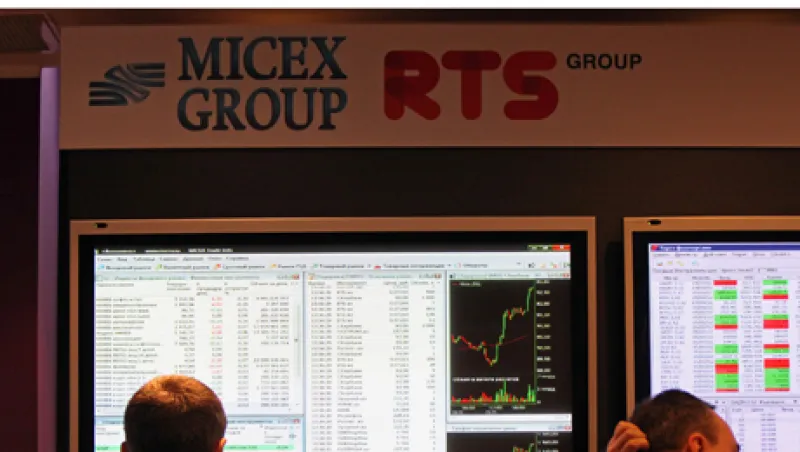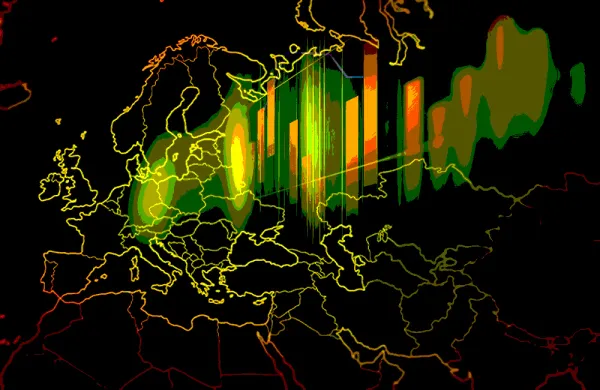RUSSIA EXPORTS NOT ONLY RAW MATERIALS BUT also the capital markets business that revolves around them. Russian companies have raised tens of billions of dollars through initial public offerings over the past six years, most of it on foreign bourses where investors trust the ground rules and companies feel confident of finding liquidity. The two blockbuster Russian IPOs of the 2006–’07 market boom — state oil company Rosneft’s $10.7 billion placement and state bank VTB Group’s $8 billion debut — were held on the London Stock Exchange. In 2010 aluminum giant United Co. Rusal turned to Hong Kong to raise $2.2 billion. Outgoing Russian President Dmitry Medvedev promised to reverse this trend in his landmark 2009 article, “Forward, Russia!” One of Medvedev’s reform planks was to turn Moscow into an “international financial center.” That push appears to be making some belated progress: In January the European Bank for Reconstruction and Development bought 6.29 percent of Micex-RTS, the unified Moscow stock exchange formed last December when the Moscow Interbank Currency Exchange merged with the Russian Trading System after nearly two decades of intense rivalry.
The purchase, whose terms weren’t disclosed, is the EBRD’s first stake in a securities exchange. “The acquisition fit with our strategy of supporting capital markets in the Russian Federation,” says Dobrin Staikov, the London-based EBRD banker who led the deal team. “We also see it as a viable commercial investment.”
| Ten Largest Russian Initial Public Offerings, 2008—2012* | ||||
| DATE | VALUE ($ MILLIONS) | ISSUER | INDUSTRY | EXCHANGE(S) |
| Jan. 22, 2010 | $2,239 | United Co. Rusal | Metal and steel | Hong Kong Exchange Euronext Paris |
| May 23, 2011 | 1,435 | Yandex | Technology | Nasdaq Stock Market |
| Nov. 5, 2010 | 1,003 | Mail.Ru Group | Technology | London Stock Exchange (LSE) |
| April 18, 2011 | 782 | Nomos-Bank | Finance | LSE Moscow Interbank Currency Exchange (Micex) Russian Trading System (RTS) |
| June 24, 2011 | 588 | Global Ports Investments | Transportation | LSE |
| April 15, 2011 | 575 | Etalon Group | Real estate | LSE |
| July 13, 2011 | 565 | PhosAgro | Chemicals | LSE, Micex, RTS |
| April 30, 2008 | 470 | Globaltrans Investment | Transportation | LSE |
| Nov. 2, 2010 | 428 | O'Key Group | Retail | LSE |
| Nov. 9, 2010 | 400 | TransContainer | Transportation | LSE, Micex, RTS |
| *As of April 13, 2012. | Source: Dealogic. | |||
Micex-RTS reported average daily trading volume of $45 billion for March, with Micex accounting for about 60 percent. The two platforms had developed complementary strengths that enhance the merger’s value, says Timur Nasardinov, head of equity trading at Troika Dialog, one of Moscow’s busiest brokerages. Micex, which was owned mostly by state banking structures, dominated the cash equity and currency markets, and served a largely domestic investor base. RTS, backed by private banks and brokerages, created derivative products that appealed to foreigners. “This long-expected deal is highly positive for the market in general,” Nasardinov contends.
Aganbegyan’s most crucial planned improvement, the Troika trader says, is the addition of a so-called T+3 settlement mechanism. Standard in the rest of the world, T+3 lets buyers pay for securities within three days of purchase. Right now the only way to obtain Russian equities is with cash up front. “As the broker, you end up creating something synthetic that acts like T+3, but that adds a lot of complications,” Nasardinov explains.
Late last year Russia’s legislature cleared the way for another essential stock market reform when it passed a long-delayed statute that allows for the creation of a central national securities depository. U.S. institutional investors are legally barred from putting money into any country that lacks this service. Aganbegyan’s team is promising to unite the Micex and RTS depositories and offer T+3 settlement by the end of the year.
The Russian government has taken other steps toward making Moscow a national if not an international financial hub, by introducing an insider trading law and combining insurance and securities market regulators. One fringe benefit of the Micex-RTS deal is that the ownership stake of state entities in the merged exchange will drop to less than half, the EBRD’s Staikov notes. RTS shareholders have demanded an IPO no later than next March.
However, Micex-RTS has no control over a major obstacle to the growth of the Russian share market. State regulations on pension funds thwart the development of a domestic capital base by forbidding asset managers to lose money in any given year. That forces pensions to invest mostly in Russian government bonds. Meanwhile, at about $4 billion in assets, the country’s mutual fund business is tiny. So Russian stocks remain dependent on foreign investors, who prefer to trade on foreign exchanges. Still, a united and improving Micex-RTS signals that Russian markets may not be laggards forever. • •






